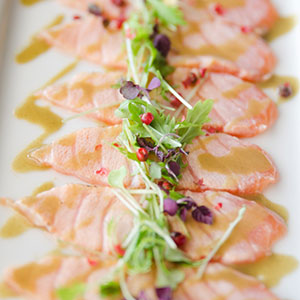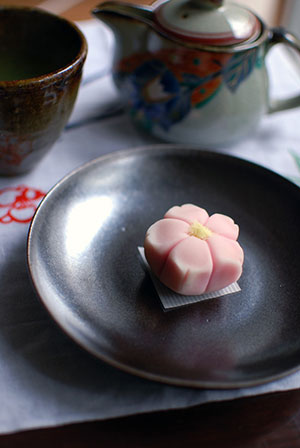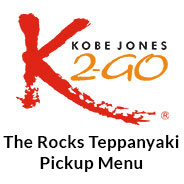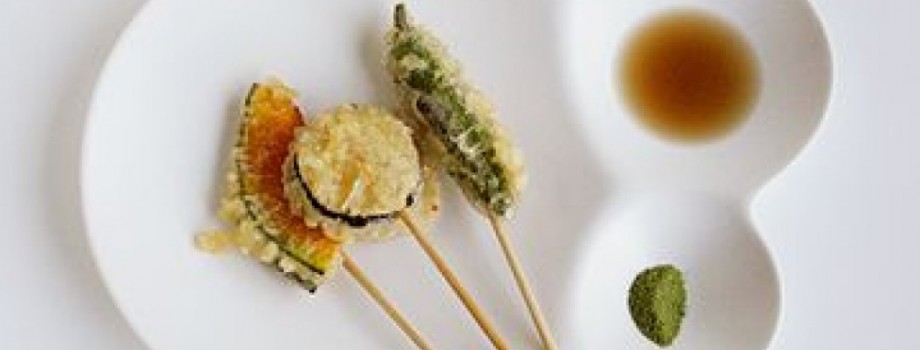Those of us who like to cook – and eat – know that most people eat with their eyes before they even pick up their cutlery. In the restaurant world, if a dish looks spectacular, diners will admire it first, then discuss it with their tablemates, most likely Instagram it and then tuck into the dish. So the presentation of food is just as important as the flavour, texture and temperature of a dish.
Food presentation is a focal point in Japanese cooking as chefs will put just as much artistic expression into choosing the chinaware as cooking the ingredients. But it’s not as difficult as you think and by emulating some of the guiding principles of Japanese plating and presentation, you can wow dinner guests at home without stepping foot in a commercial kitchen, no matter what cuisine you’re serving.
Chinaware
The size, shape and colour of your plates are just as important as the ingredients you’ve chosen. Most Japanese restaurants and izakayas (bars) commission stoneware to be made especially for the kind of dishes they plan to serve – some with built-in sauce dishes. You may have noticed your neighborhood cafe copying this trend, as it lends a certain something extra. At home, try large, neutral coloured plates that’ll make your dinners pop.
Plating
Minimalism is not only a guiding principle of Japanese cuisine, but also of most fine dining restaurants around the world. To achieve this, remember that blank space on a plate is a good thing and that less is more – big plates, small portions. Next, think about the placement of your ingredients. Japanese chefs like to group ingredients together for simplicity, but you may also want to go one step further and follow the classic “clock” rule: carbs at 10, proteins at 6 and vegetables at 2. For height, always place your protein such as a nice cut of meat on top of carbs and starches, but try not to create a “tower”. Your guests will be wondering where to start.
Harmony
 The central philosophy of Japanese cuisine is harmony. As well as looking spectacular, the dishes are designed to give the diner a sense of equilibrium, peacefulness and stillness. Whereas stodgy plating leaves the diner confused and their senses affronted, Japanese chefs deliberately place ingredients into positions that will both sooth and entice the diner. Try one of the 7 methods of presenting such as sugimori, standing ingredients up; hiramori, laying them flat and vertical on the plate; or chirashimori which means gathering ingredients together with spaces in between. These methods could work for all types of cuisines.
The central philosophy of Japanese cuisine is harmony. As well as looking spectacular, the dishes are designed to give the diner a sense of equilibrium, peacefulness and stillness. Whereas stodgy plating leaves the diner confused and their senses affronted, Japanese chefs deliberately place ingredients into positions that will both sooth and entice the diner. Try one of the 7 methods of presenting such as sugimori, standing ingredients up; hiramori, laying them flat and vertical on the plate; or chirashimori which means gathering ingredients together with spaces in between. These methods could work for all types of cuisines.
Harmony and balance is also achieved with contrast through the law of opposites. If you are presenting a round, organic dish go with a square or rectangle plate. Or if the dish is colourful and vibrant go with a plain, neutral plate. If the dish is stark and plain, try dressing it up with bright garnishes.
Garnishes
Speaking of garnishes, try not to add something to a dish just to add colour – a garnish is used to compliment the ingredients already on the plate. If you’d like to give your diners a choice, like in Japanese cuisine, thinly slice ginger and daikon and place around the plate or serve in separate bowls. Because of the artistry involved in Japanese dining, chefs also place a lot of importance on the shape of a garnish, often moulding vegetables into seasonal flowers. Obviously you don’t have to go to this extent, but perhaps add a little artistic flair of your own somewhere on the plate.
An ode to the seasons
 Serving seasonal food is “in” right now in the food industry, but this can add to your presentation at home too. Japan has four distinct seasons that are honoured in everything from the chinaware used to the chosen garnishes. For example, a hot summer may call for dinner in a bamboo basket, spring is china decorated with cherry blossoms, autumn is red or green garnishes and leaf-shaped plates and winter is a big bowl of steaming noodles. All of these choices give the diner a context and means you are using all of your senses.
Serving seasonal food is “in” right now in the food industry, but this can add to your presentation at home too. Japan has four distinct seasons that are honoured in everything from the chinaware used to the chosen garnishes. For example, a hot summer may call for dinner in a bamboo basket, spring is china decorated with cherry blossoms, autumn is red or green garnishes and leaf-shaped plates and winter is a big bowl of steaming noodles. All of these choices give the diner a context and means you are using all of your senses.
Tools of the trade
Head chefs don’t achieve plating perfection with what you would usually find in a home kitchen. They’ll use things like paintbrushes for smearing sauces, cookie cutters for creating perfectly round mash, and squeeze bottles for accurately dispensing dressings. If you don’t already have these things lying around, they’re easy enough to purchase and the effects are so simple to achieve but will look like you’ve spent a lot of time on your presentation.
Plating trends will come and go, and if you sit through an episode of Masterchef (et al) you can pretty much pick up what the latest food fashions are. However, for lasting elegance just remember to keep it balanced and minimal, and to always put taste, texture and temperature first and you can’t go wrong!






